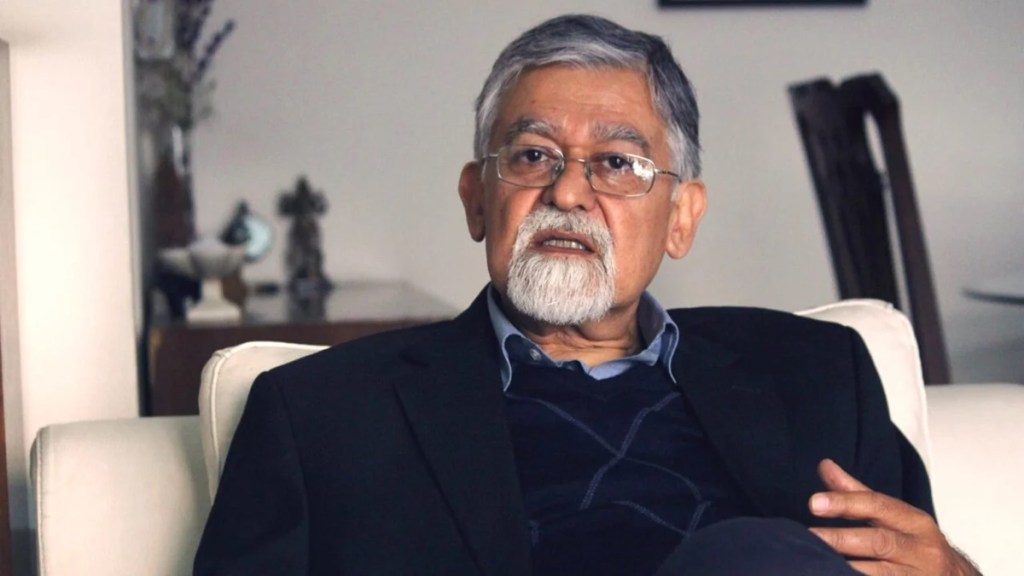
”Chinese dumping could wipe out our industry, we have to be wary,” says Arvind Virmani
As the trade war triggered by the US has changed the global landscape of cross-border transactions in goods, India will do well to adopt a three-pronged strategy, Arvind Virmani, Member, Niti Aayog told Prasanta Sahu in an interview. The noted economist, who was chief economic adviser, feels free trade agreements (FTAs) with the developed countries such as the US, the EU and the UK ought to be concluded in FY26 itself. He, however, advocates protective tariff regime vis-à-vis China to check dumping by the neighbour. For the rest of the world, the tariff regime could be defined (on a most favoured nation basis).
Q: If the US-China tariff war persists, what will be its impact on India?
The US has paused the reciprocal tariff for 90 days, except for China. The US would be looking for alternative sources of supply, which could be India or Latin America or any other country. The advantage that we have is that we already produce 75% of the goods which the US imports from China. These products may not be exactly the same, or may be more expensive than China’s, but we still produce many of these things. So, in the short term, the US may realise that some of these things can just be imported from India. Maybe, Indian manufacturers have to tailor their products according to the US requirements.
Q: What should be India’s strategy?
I had said India’s decision not to join RCEP (Regional Comprehensive Economic Partnership) was right. RCEP will act as a back door for China to come into the system. We should have FTAs with the developed countries, where the relations are complementary, but not with a competitor country like China. It can flood and destroy India’s manufacturing.
So, the strategy had emerged right then, which was to have FTAs wit complementary countries. We have a rising share of global working age population whereas in developed countries this is basically declining. Secondly, they have the technology and the risk capital. The government has articulated this, probably clearly for the first time in the last three to six months.
We’ve done an FTA with Australia. We have been discussing one with UK and this may now be clinched soon. FTA talks with the EU is progressing. Bilateral Trade Agreement with the US is progressing and is expected by fall of this year.
FTAs will induce and incentivize the supply chains to shift to India. Foreign direct investment is not just money, its set of things together: management, risk capital, technology and create markets and demand. So, attracting FDI anchor investors with the supply chains strength is very important. This is what drove the growth of Southeast Asia and China.
Q: Could India be a net beneficiary of the talks with the US on tariffs?
In the FTA with Australia, there was a differential given that India is a developing country. So, duty-free access to over 95% of Indian manufactured goods was allowed in Australia and 85% duty-free access to Australian goods in India. I hear that India and the US are talking about 80:90, 80% India would open for US goods, and 90% US will open for Indian goods. This concept is correct.
The 20% or so which are left out, the teams of both countries have to subsequently undertake detailed, item-by-item discussions. These detailed discussions are what have now started. Both countries will benefit from the BTA.
Q: What is your take on the potential and desirability of India cutting tariffs?
There should be a three-fold policy. FTAs with developed countries, a protective tariff policy for China and a tariff policy for the rest of the world. FTAs will maximize zero tariffs. With China, we have to protect, there’s no other way. Indian producers generally have 20% to 30% disadvantage versus China. So, they would need 30% or so of protection in sectors like electronics and machinery. So, first to get the FTAs in place, make sure we have reasonable protection against China, and then we can think of other things.
Q: Should there be a distinction between farm goods and industrial goods in trade deals?
Absolutely. We have to be very careful about things which are produced by a mass of farmers. That doesn’t mean there can’t be any reduction in tariffs for such goods, but it has to be very carefully thought out.
Q: Do you think BTA with the US should be confined to goods rather than services and sensitive areas like data storage, IPR, government procurement etc.?
Economics tells me that the supply chains issue is more urgent. So to the extent, phase A agreement is better done on commodities given the reciprocal tariff issues. But that does not mean service is not important for the future. It (services) will take a little time.
Q: What about the increased threat of China dumping goods in India due to higher tariffs in the US?
As long as China is facing higher tariffs, they will have to reduce exports to US. They’re bound to dump goods in the rest of the world. We have to watch every product as dumping could wipe out our industry. .
Q: Do you think India should recalibrate its approach to FTAs?
I think the recalibration has already happened. The EU and India have announced that they would like to complete FTA by the end of this year. FTA talks with UK is coming along very well. Hopefully all three deals including BTA with US will materialise in 2025-26.
Source : Financial Express
